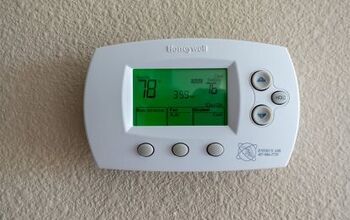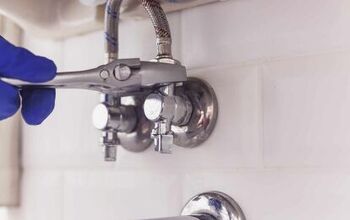How To Make Your House Safe For Cats

Having cats is like having children in that they’re quite delicate. The key difference is that cats are curious and sometimes hyper from day one, and they can endanger themselves. You’re not alone if you’ve wondered how to make your house safe for cats.
The best way to make your house safe for cats is to remove choking hazards from the floors and fasten your tall furniture to the wall. It’s also important to keep the toilet lid closed and check your appliances before closing the door to ensure your cat's not hiding inside. Prop doors open before you leave the house, so your cats don’t get stuck in a room.
Cat-proofing your house and keeping them safe is easier than you may think. Follow along as we explore how to make your house safe for cats.
How To Cat-Proof Your House
Cat-proofing your house is as much about their safety as it is about your peace of mind. Many things that are dangerous to cats are also dangerous for you and can create a big mess. Keep the following 10 cat-proofing tips for your home in mind.
1. Tip-Proof Your Furniture
Cats are among the most agile animals, especially when it comes to domesticated animals. That means they can climb or jump up on nearly all your furniture and even jump between different pieces. They generate plenty of force when they do so, so there’s always a chance that the furniture will tip over.
This will naturally startle your cat, and they could land underneath the furniture. This is the worst-case scenario, and while unlikely in many cases, it’s not worth the risk. Buy some brackets, zip ties, or straps to fasten your tall furniture to the wall or ground.
Many homeowners do this when they’re about to be new parents, but it applies to cats as well. It doesn’t take long, and you can buy everything you need for under $30 at many hardware stores.
2. Move Or Loop Cords
“Curiosity killed the cat” is much more than a memorable catch phrase. Cats will fixate on anything in your house that catches their fancy and attempt to play with it. That includes long cords, whether they’re for your blinds and curtains or your string lights and other electronics.
You must move any hanging cords in your house, especially if they’re at a reachable height for your cats. Keep in mind that cats can jump quite high, so you must consider that they can reach objects much taller than themselves. It’s a great idea to secure your electronic cords with zip ties and tuck them behind your devices or on the floor.
You can also loop the cords for your blinds and curtains to ensure they aren’t reachable. Doing so can also reduce the risk of the cords getting stuck around your cat’s paws, or even worse, their neck. The possibility of this happening highlights the importance of cat-proofing your house.
3. Close Your Appliances And Cabinets
Many cats fixate on small spaces, especially if they don’t typically get to see inside them. That includes your washing machine, dryer, and dishwasher. Given the chance, your cat may jump into any of these appliances while you aren’t looking.
The risk is that the cat will get stuck inside if you close the door without seeing them in there. To avoid this, you must get into the habit of checking inside your appliances before you close the doors. You must be vigilant about cabinets as well, especially if they contain chemicals and breakables.
4. Conceal Your Medications
Have you ever seen a cat smack bits of cat food across the floor like a hockey puck? Many cats do this with just about anything small, and they sometimes attempt to eat whatever it may be. This can even include pills, as they’re often the same size as cat food and treats, which may entice them.
Conceal your medications and avoid leaving tablets and capsules on your countertops. Cats can even knock pill organizers off the counter and spill out the pills. That doesn’t mean you shouldn’t use a pill organizer, but you should at least put it away in a cabinet.
Dedicate a drawer or cabinet to your medications, prescription and over the counter, and only access them when needed. Your cats may not be curious enough to try them, but it’s better to be safe than sorry when it comes to your furry friends.
5. Keep Them Off The Counters
It may be easier said than done, but training your cats to stay off the counters should be among your top priorities. That’s especially true in the kitchen, where you most likely have sharp utensils, delicate dishes, and a stovetop. It takes time, but you can train your cats to avoid the countertops if you provide plenty of nearby distractions.
For example, you can set up some scratching posts and cat trees in a nearby room. This will give your cats something else to focus on and potentially wear them out. You can raise your voice, clap, or gently spray them when they jump on the counters.
However, you must be careful not to rattle them and make them feel unsafe at home. Instead, develop a rapport with your cat so they learn to stay away from the counters, even if it takes a while for them to understand. It also helps to put double-sided tape and aluminum foil on the counters, because cats hate the texture and avoid it at all costs.
6. Don’t Leave The Toilet Seat Up
While you may not have the urge to climb into a toilet, a curious, young, inexperienced cat may do so. Your cat doesn’t have a concept of what a toilet is, at least not yet, so the appearance and presence of water may entice them. Toilets are low enough that even a small cat can easily jump onto them and ultimately fall in.
The worst-case scenario is that your cat may get stuck in the toilet and get injured. It could even end worse, depending on your cat’s size, so it’s better to simply close the lid after each use. Your cat can still jump onto the lid, but they can’t fall into the water.
7. Never Leave An Open Oven Unattended
Cooking while balancing other household chores after a long day can leave anyone feeling overwhelmed. However, you must consider many variables while cooking when you have a curious cat around. Never leave an open oven unattended while your cats are around, or else they may try to climb in.
They may feel some heat standing in front of it without realizing how hot it is inside the oven. Play it safe and only leave your oven open for as long as it takes to remove the food. Otherwise, you can always contain your cat in another room while you finish cooking.
8. Prop Doors Open Before Leaving
You’re not alone if you’ve ever laughed at the sight of your cat unexpectedly opening and closing doors in your house. Cats can easily push doors shut or even pull some doors open. However, cats sometimes struggle with pulling doors back open, and it’ nearly impossible if the door latches.
Similarly, a door can get stuck if it’s on a carpet, as it may take more force to open. In that case, it’s a good idea to prop certain doors open before you leave for work or a vacation. Simply stick some wedges beneath your doors, so they’ll stay open until you get home.
Conversely, it’s worth using wedges and doorstops to keep some doors closed while you’re gone. That’s especially true if the rooms contain many breakable items and houseplants.
9. Keep Them Inside
There are many reasons why it’s recommended that you keep your cat inside, and its safety is at the top of the list. Cats have many natural predators, such as dogs, coyotes, and bears, among others. Outdoor cats are vulnerable to such predators, as well as pests like fleas, roundworms, and ticks, which can transmit diseases.
Upon coming back inside, your cat may unknowingly introduce such pests to your house. This can affect your other pets and even yourself in some cases. There is also a risk of malnourishment and dehydration if they spend long periods outside.
It’s important to understand that domestic cats can damage the local ecosystem. According to the American Bird Conservancy, cats kill 2.4 billion birds per year, and that is a big toll. It may not seem apparent, but your outdoor cat may leave a bigger impact on the environment than it seems.
10. Clean Your Home And Eliminate Choking Hazards
Much like dogs, domestic cats often bite and chew on things they shouldn’t have in their mouths. You can make your house safe for cats if you remove any choking hazards you come across. That includes loose change, beads, rubber bands, screws, and even Christmas decorations made of tinsel.
Remove any loose items from the floor and surfaces they can easily reach if you’re worried about your cat choking on them. Cats also sometimes eat large balls of cat hair on carpeting and in the corners of rooms. That itself is a choking hazard, so it’s worth vacuuming often to keep your home tidy and safe for cats.
Summing It Up
Never leave loose cords dangling, or else your cat may get their neck or paws stuck in them. You must also keep the toilet lid down and train your cats to stay off the counters to avoid injuries. Keep your cats indoors to protect them from pests, diseases, and predators they’re vulnerable to.
Related Guides:

Nick Durante is a professional writer with a primary focus on home improvement. When he is not writing about home improvement or taking on projects around the house, he likes to read and create art. He is always looking towards the newest trends in home improvement.
More by Nick Durante



























